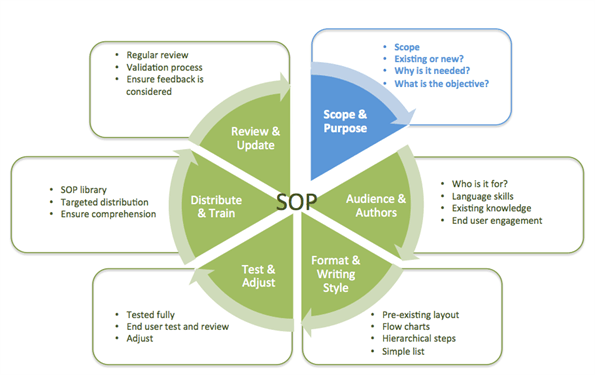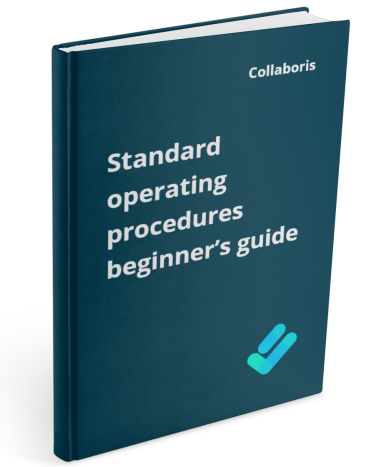Policy Approval Workflow Automated policy approval workflows offer several benefits that can significantly enhance ...
Standard Operating Procedures Guide – Scope and Purpose
Welcome back to the second in our series of blogs describing the Key elements in the Standard Operating Procedures (SOP) lifecycle where we will consider what is the purpose of a SOP. Last time we introduced the ‘SOP pie’ to help us describe the main areas involved and a high level view of the lifecycle. This blog will dig further into the first slice of that pie - Scope & Purpose.

Before we move on let's just remind ourselves at a high level what a Standard Operating Procedure is:
Standard Operating Procedures (SOPs) are detailed written instructions to achieve uniformity of the performance of a specific function. These can be used to satisfy compliance requirements, mitigate health and safety risk, improve quality or simply to work in a consistent and efficient manner throughout an organisation.
Scope and Purpose of your SOP
When thinking about the Scope and Purpose of a SOP, the first thing to understand is whether this is an update to existing SOP or a totally new SOP.
There is no point in reinventing the wheel when a simple review and refresh may do the job. Then ask yourself some simple questions on Scope:
There are similar types of questions on Purpose:
Once we have a clear answer to those questions, we need to:
That’s just about it on our Scope and Purpose. Hopefully that has helped you on your way in the first step of creating SOP. Look out for the next series which will cover the Audience and Author considerations
Get your free Standard Operating Procedures guide
Creating Standard Operating Procedures for your organisation doesn't have to be complicated. This guide will introduce you to the whole lifecycle from creation to training and distribution.
Other articles in the series:
You may also like:
Creating policy review reminders in Office 365 You might want to set up a ...
Podcast: Implementing effective healthcare procedures Implementing effective healthcare procedures is an ongoing process. It ...
Podcast: 10 Powerful Strategies for Employee ComplianceOrganizations face challenges in ensuring employee compliance with ...
AI Warns About Itself: How I Asked AI to Create a Podcast on the ...
Benefits of writing SOP's In any organization, standard operating procedures (SOPs) are critical to ...

